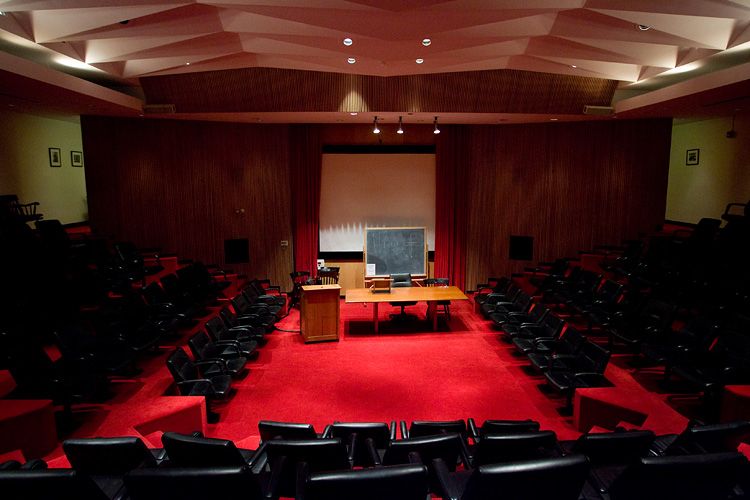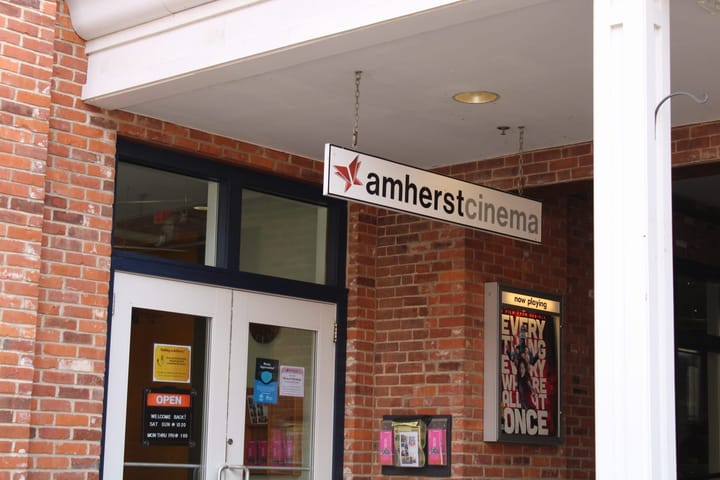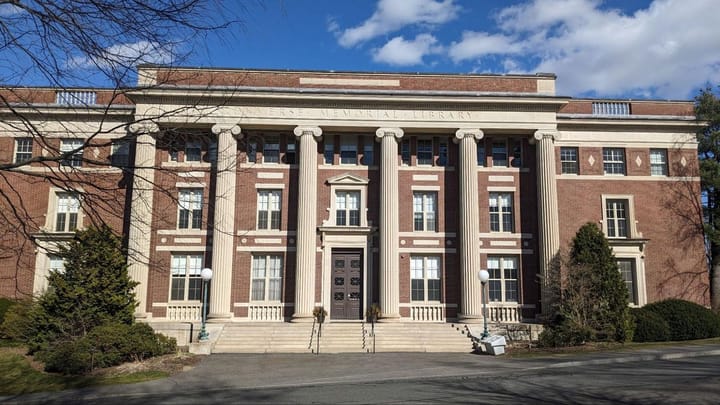The Association of Amherst Students is facing a significant depletion in its funds, due to reductions in the student activities fee — its only source of income — during the pandemic. The Budgetary Committee is considering stricter guidelines on discretionary spending to curtail the depletion.
The Association of Amherst Students (AAS) has seen a significant depletion of its funds in recent years, due to sustained reductions in the student activities fee relative to its pre-pandemic level.
Since the beginning of the pandemic, the AAS’ rainy day fund, which holds surplus funds accrued over the years, has more than halved, falling from approximately $200,000 to just $79,000, according to AAS Treasurer Dania Hallak ’24.
The rainy day fund is used to cover costs if the AAS overspends its discretionary fund — which funds requests made by students and student organizations over the course of the semester — as well as to fund projects exceeding $10,000. As the amount of money allocated to the discretionary fund this semester is expected to be insufficient to cover discretionary spending, the AAS will likely have to rely on the rainy day fund to cover costs, Hallak said.
To avoid extinguishing the resource completely, the AAS Budgetary Committee (BC) is considering changing several of its funding policies. Looking forward, students could see reduced caps for the number of events clubs can request funding for each semester, as well as stricter funding guidelines for Senate projects, which are sometimes funded directly from the rainy day fund as they exceed $10,000.
According to Hallak, the primary cause of the rainy day fund’s depletion has been the reduction of the student activities fee — a fee charged to each student at the beginning of every semester which is the AAS’ only source of income — since the beginning of the pandemic.
During the 2019-20 academic year, the student activities fee was set at $365 per student each semester. However, during the 2020-21 academic year, with many students living off campus and unable to participate in traditional college life, the college administration made the decision to cancel the student activities fee for the year.
Yet, throughout the year, AAS continued to fund clubs and student organizations, Hallak said, “and everything was just coming out of AAS’ pockets.”
Last year, as students returned to campus, the college reinstated the student activities fee, but at the rate of just $230 per semester — only about 60 percent of what it had been prior to the pandemic.
“The reason [the student activities fee] was lowered was because, technically, we were still [under Covid] restrictions,” Hallak explained. “We could not fund formals, parties, etc. So the school was like, ‘You need to abide by our rules, so you’re only getting this amount of money.’”
Midway through last year, however, the college began to relax its Covid restrictions, and activities again started opening up.
“We started funding activities like it was normal,” Hallak recalled, “but the student activities fee was still low.” The result was that AAS once again had to dip into the rainy day fund to cover the semester’s costs.
This year, the student activities fee has been raised to $300 per semester, in accordance with a motion passed by the AAS last spring. Hallak noted, however, that this sum is still below the $365 per semester charged before the pandemic, and expressed worries that the fee may still not be enough to cover the AAS’ costs.
“We have also been increasing our [spending] caps to account for inflation,” Hallak said. As the student activities fee has not increased with inflation, these price cap increases — which help avoid situations in which clubs are forced to pay a portion of things like travel costs out of their own pockets — add a further strain on the overall budget.
This semester, AAS is managing $570,000, split into three pools of money: the master general fund, club budgets, and the discretionary fund.
The master general fund includes the AAS Senate fund, auditor fees, student payrolls, and also covers most of the programs which AAS pays for every year — everything from providing students with free PVTA access to supporting the Campus Activity Board and Campus Resource Centers. This semester, the master general fund has been allocated $225,000 dollars, about 39.5 percent of the total AAS budget.
AAS has allocated another $302,551, just over 53 percent of its budget, to club budgets. Hallak explained that the club budgets provide the primary source of funding for Registered Student Organizations (RSOs) that have been active on campus for three continuous semesters. “This semester, [RSOs] had a five-week period to submit club budgets,” Hallak said. “The total request was $400k.” She added that because some requests were not in accordance with AAS policies, the total allocated was slightly lower.
The money that is not allocated to club budgets or the master general fund make up the discretionary fund, which individual students and clubs can request funding from throughout the semester. Even many clubs with funds already assigned through a club budget rely on discretionary funding throughout the year to pay for events which they had not already planned at the start of the semester. This semester, the discretionary fund contains only $42,448, or 7.45 percent of the AAS budget.
According to the AAS Fall 2022 budget, more than $94,000 has already been allocated from the discretionary fund over the course of BC’s first five weekly meetings of the semester, although only $24,624 has been spent so far. Last spring, AAS spent a total of $181,529 through the discretionary fund. Hallak explained that any discretionary spending in excess of the $42,448 in the discretionary fund will have to be covered by the rainy day fund.
Hallak noted that avoiding a situation in which the AAS empties the discretionary fund and the rainy day fund is a crucial priority. Were both the rainy day fund and AAS’ income from the student activities fee totally emptied, Hallak explained that AAS would need to freeze all spending for the rest of the semester.
As a result, the BC is currently discussing several ways to avoid excessive discretionary spending. These possibilities include reducing the cap on the number of events clubs can host per semester, as well as establishing clearer rules about the difference between events and regular club meetings, the latter of which has a much lower spending cap per person. Additionally, Hallak mentioned that AAS is planning to follow stricter guidelines when funding Senate projects this semester than in previous years.
Because the discretionary fund has a $10,000 cap on spending, projects which cost more than that sum need to be covered directly by the rainy day fund. The AAS Senate makes decisions on whether to fund these projects by direct vote, however, AAS’ budget shortage means that it may be more difficult for students to receive funding through this method than in the past.
For example, in the minutes from the AAS Senate’s Sept. 26 meeting, Senator Mollie Hartenstein ’23 raised the issue of acquiring more AAS vans for students to rent, as loosening Covid restrictions would increase student’s need for transportation services. Senator Jeffrey Ma ’24 added that at the moment AAS only had one car and one van for students to rent.
Nonetheless, Hallak recommended that, as this funding would have to come from the depleted rainy day fund, it could only be done “if [we] had extra money, which was very unlikely.” As a result, discussion of increasing the number of vans available to students has been postponed until the budgetary situation becomes clearer.
Looking forward, Hallak said that she thinks raising the student activities fee to its pre-pandemic level is the first step. “If BC is increasing our [spending] to account for inflation, and the college isn’t increasing the student activities fee, of course we’re going to run a deficit,” she said.






Comments ()